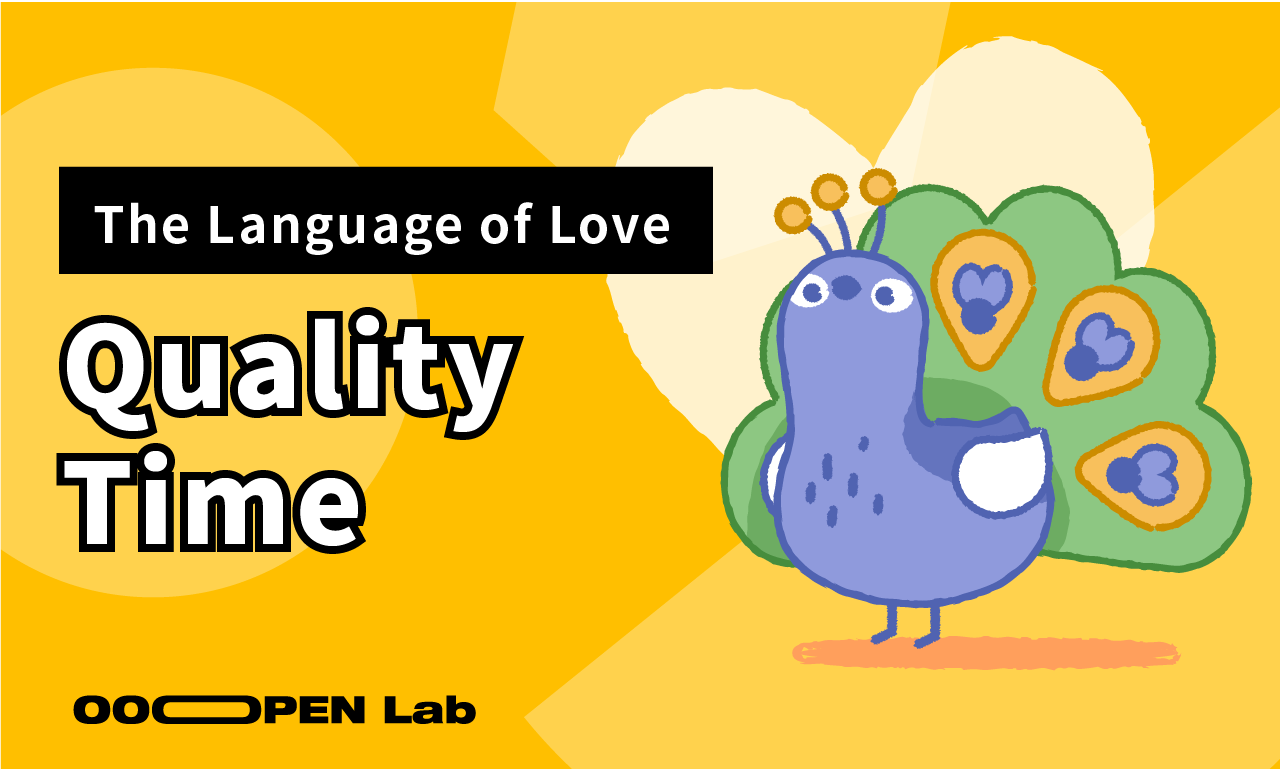- What is Secure Attachment?
- How Does Secure Attachment Develop?
- Five Characteristics of Secure Attachment
- How to Foster Secure Attachment in Children
- Can I Become a Securely Attached Person?
What is Secure Attachment?
Secure attachment is one of the attachment styles described in attachment theory. It refers to a bond in which a child does not experience excessive distress when separated from their caregiver. Their emotions remain relatively stable, and they feel secure in relationships.
Children with a secure attachment style may feel nervous or anxious when their caregiver is not present. However, as soon as the caregiver returns, they can quickly regain emotional stability and continue exploring their environment.
This is because they inherently understand that a healthy relationship provides a sense of security.
They trust that others can be reliable and that they themselves are worthy of love.
Individuals with a secure attachment style possess a strong sense of security within. They do not evaluate themselves negatively just because they lose a relationship.
When alone, they can enjoy their own life and maintain a good relationship with themselves. When facing difficulties, they know they can reach out to others for help.
In building relationships with others, they can fully embrace and enjoy the joy, intimacy, and fulfillment that these connections bring.
How Does Secure Attachment Develop?
“Maternal sensitivity has been consistently identified as a key predictor of secure attachment. Sensitivity involves the caregiver’s ability ‘to perceive and to interpret accurately the signals and communications implicit in the infant’s behavior, and to respond to them appropriately and promptly.'”
Ainsworth, M. D. S., Bell, S. M., & Stayton, D. J. (1974). Infant-mother attachment and social development: ‘Socialisation’ as a product of reciprocal responsiveness to signals. In M. P. M. Richards (Ed.), The integration of a child into a social world (pp. 99-135). Cambridge University Press. (Quote is a widely cited definition from Ainsworth’s work).
Secure attachment is formed when a child has a “good enough mother” or caregiver—a term coined by British psychoanalyst Donald Winnicott.
This means that the caregiver is able to understand and meet the child’s needs, helping them express their emotions and, in turn, allowing the child to learn how to understand their own feelings.
For example, we may observe that some mothers, when their child cries, try to guess the reason behind their distress, soothe them, and gently reassure them by saying, “It’s okay.”
The caregiver may not always guess correctly, but through this process, the child receives enough comfort and learns that someone is there to help them navigate overwhelming emotions.
The feeling of “someone truly understands me and takes care of me just right” provides the child with a deep sense of safety and security.
“Attachment theory posits that a primary caregiver who is responsive to an infant’s needs allows the child to develop a secure base. This secure base phenomenon implies that when children trust their caregiver to be available and responsive, they feel safe enough to explore their environment. The caregiver also functions as a safe haven, a source of comfort and reassurance to return to when distressed.”
Ainsworth, M. D. S., Blehar, M. C., Waters, E., & Wall, S. (1978). Patterns of attachment: A psychological study of the strange situation. Lawrence Erlbaum Associates. (This quote synthesizes Ainsworth’s core concepts of secure base and safe haven).
At this stage, the caregiver becomes the child’s secure base—a safe haven where they can seek refuge when needed.
This allows the child to internalize the belief that “There is a safe place for me,” and “There is someone who accepts me as I am.”
As they grow into adulthood, even when facing stress, they are less likely to be overwhelmed by their emotions.
They retain an internalized sense of security—the memory of having someone by their side, helping them regulate their emotions until they naturally return to a state of calm.
This consistent and attuned caregiving forms the foundation of secure attachment.
Five Characteristics of Secure Attachment
Positive Self-Concept
Self-concept refers to an individual’s perception, thoughts, and attitudes about themselves—essentially, how they define who they are.
During childhood, a person’s self-concept is significantly shaped by how they are treated by their caregivers. Children tend to internalize their experiences and interpret them as reflections of their own worth.
For instance, if a caregiver frequently resorts to harsh discipline—yelling or criticizing a child’s mistakes—the child may develop cognitive distortions, believing, “I must be a bad person; that’s why my parents treat me this way.”
On the other hand, when caregivers provide a secure base by offering understanding and kindness, children are less likely to develop negative self-perceptions. Instead, they can view themselves in a neutral or even positive light.
Emotional Stability
People with secure attachment tend to have greater psychological resilience—the ability to cope with stress and adapt to challenges effectively—allowing them to maintain emotional stability.
Resilience refers to a person’s capacity to adjust to difficulties, recover from setbacks, and return to a balanced state.
When faced with challenges, securely attached individuals still experience emotional distress, frustration, or discomfort. However, they are able to use healthy coping strategies to regulate their emotions more quickly.
For example, they might:
• Reframe situations by viewing them from a different perspective rather than dwelling in negativity.
• Seek social support, strengthening their relationships while overcoming difficulties.
By applying these strategies, they can turn setbacks into sources of growth and develop even greater emotional stability over time.
Willingness to Try New Things
Because securely attached individuals maintain emotional balance and seek support when needed, they are more open to facing new challenges.
When they encounter difficulties, they:
• Know how to solve problems or reach out for help.
• Give themselves time and space to process setbacks without feeling overwhelmed.
As a result, they are able to regain composure quickly and confidently step forward into new experiences.
For them, every challenge is simply an opportunity to try—failure is just part of the process, and they can always try again. This reduces anxiety and fear of the unknown, allowing them to maintain curiosity and enthusiasm when exploring new opportunities.
Empathy and Understanding
Most securely attached individuals have experienced being deeply understood, which allows them to extend this same understanding to others.
In childhood, their caregivers actively tried to interpret and validate their emotions. Over time, they, too, began to recognize and consider their caregivers’ emotions—an early form of empathy.
Because they value others’ thoughts and feelings, they tend to exhibit prosocial behavior—acts of kindness and cooperation—making them appear warm, thoughtful, and compassionate.
Ability to Build and Maintain Stable Relationships
In relationships, securely attached individuals can:
• Interact steadily with others, without excessive clinginess or avoidance.
• Feel secure even when temporarily apart, knowing the relationship remains intact.
• Maintain a balanced emotional distance, avoiding extreme dependency or detachment.
This allows them to cultivate and sustain healthy relationships, while also enjoying the happiness that comes from meaningful connections.
Moreover, if they encounter inconsistent or unhealthy relationship dynamics, they can recognize the red flags and leave early, rather than remaining in relationships that do not align with their emotional well-being.
How to Foster Secure Attachment in Children
Providing “Good Enough” Care
“Good enough” does not mean perfection—it simply means being responsive to a child’s needs most of the time.
This includes:
• Understanding and empathizing with their emotions from their perspective.
• Helping them manage and solve problems.
• Accepting their uniqueness and showing them that their feelings are valid.
Emotional support builds positive connections with children, helping them develop the ability to regulate their emotions in a safe, supported environment.
Experiencing consistent care and emotional stability is the foundation of secure attachment.
Physical and Verbal Affection
Physical touch is a fundamental human need that conveys love and security. Simple actions like:
• Hugging
• Holding hands while walking
• Sitting close while reading a story
These interactions create feelings of warmth, care, and safety.
Similarly, verbal support—giving praise and encouragement—reinforces a child’s sense of self-worth.
Recognizing their strengths helps foster positive interactions between the caregiver and child, boosting the child’s confidence and reinforcing the belief that they are worthy of love and kindness.
Consistency in Parenting
Different caregivers may have different parenting styles—some may be more authoritative, while others are more democratic.
Regardless of style, children need to understand rules and boundaries to feel safe.
When caregivers lack consistency, children may feel confused and anxious, unsure of what is expected of them. They may:
• Become overly anxious, constantly worrying about making mistakes or displeasing their caregivers.
• Develop avoidant behaviors, disengaging emotionally to protect themselves from unpredictability.
Providing clear and stable parenting helps children develop a sense of security in relationships.
Caregivers’ Mental Well-being
A caregiver’s emotional state directly impacts their ability to provide nurturing care.
When caregivers feel stressed or overwhelmed, they may:
• Have less patience with their children.
• Feel frustrated and helpless in their parenting role.
• Become more prone to losing control, leading to yelling or even physical punishment.
Negative emotions also shape how caregivers perceive their children. When overwhelmed, they might focus only on their child’s faults, thinking:
• “Why does my child always make mistakes?”
• “I’ve told them a hundred times, why won’t they change?”
By taking care of their own emotional well-being, caregivers can:
• Interact with their children in a more calm and stable manner.
• Recognize and appreciate their child’s positive qualities.
• Offer genuine praise and encouragement without effort.
Can I Become a Securely Attached Person?
“While attachment orientations developed in early childhood often show considerable stability into adulthood, they are not set in stone. Research suggests that significant life events, corrective relationship experiences (including therapeutic relationships), and conscious effort can lead to changes in attachment patterns, sometimes referred to as ‘earned security’.”
Fraley, R. C. (2002). Attachment stability from infancy to adulthood: Meta-analysis and dynamic modeling of developmental mechanisms. Personality and Social Psychology Review, 6(2), 123–151. (This quote reflects the findings discussed in Fraley’s influential review on attachment stability and change).
Although attachment styles are shaped by early life experiences, they are not set in stone.
With effort, individuals can rebuild a sense of security in relationships.
Creating Positive Relationship Experiences
Accumulating positive relationship experiences helps sustain emotional stability.
These experiences remind us that:
• We deserve to be treated well.
• We are worthy of fulfilling and happy relationships.
Over time, positive experiences strengthen our emotional resilience, allowing us to navigate breakups or difficult relationships without feeling abandoned or hopeless.
Healthy relationships act as emotional nourishment, reinforcing our ability to maintain stability in future connections.
Avoiding Toxic Relationships
A toxic relationship drains emotional energy and creates persistent stress.
Signs of toxic relationships include:
• Criticism and blame from the other person.
• Gaslighting (manipulating someone into doubting their own perceptions).
• Emotional blackmail (using guilt or fear to control behavior).
Toxic relationships erode self-esteem and create deep emotional distress.
A healthy relationship, by contrast, includes:
• Mutual support
• Respect
• Understanding
While occasional conflicts are natural, a healthy relationship still brings joy and emotional fulfillment.
People with insecure attachment styles may feel compelled to overcompensate in toxic relationships, believing they must earn love through excessive effort.
However, everyone deserves to be treated with kindness and equality.
Recognizing and leaving toxic relationships is a critical step toward reclaiming a sense of security and self-worth.
Seeking Support
Sometimes, despite our best efforts, we struggle to break free from unhealthy relationship patterns.
When we feel stuck in cycles of pain, seeking professional help can provide:
• Insight into recurring relationship patterns.
• Guidance on breaking negative cycles.
• Emotional support during the healing process.
Therapy can help uncover blind spots in our interactions and equip us with tools to build healthier, more secure relationships.
Change isn’t always easy, but with support, patience, and self-compassion, it’s possible to rediscover the sense of security we may have lost.
Mindy
Master’s Degree in Clinical Psychology, Licensed Clinical Psychologist (License No. 2802).
Mindy has completed clinical training in psychiatric and child mental health departments in hospitals. She specializes in psychodynamic therapy, psychodrama, and cognitive behavioral therapy (CBT). Passionate about promoting psychological knowledge, she serves as a psychology content consultant and mental health seminar speaker.




